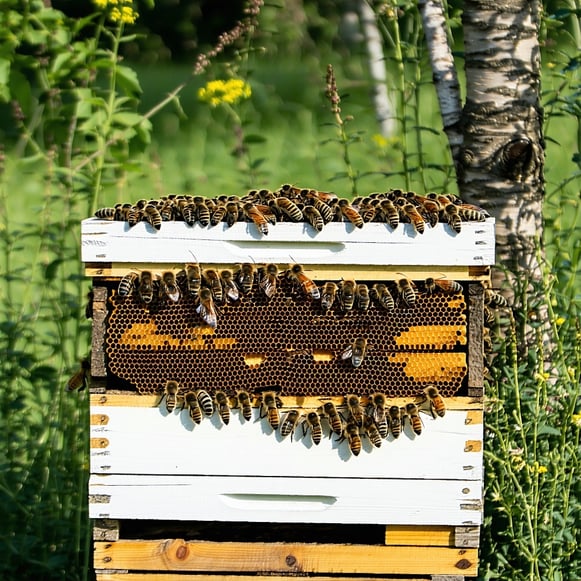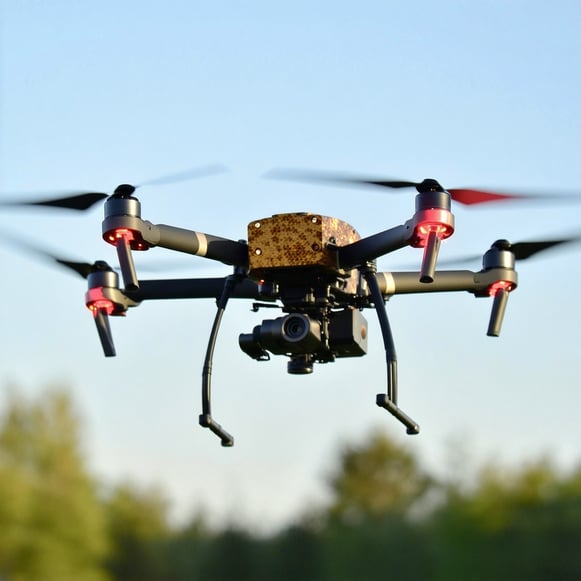Bees at the crossroads of climate, business and biodiversity
World Bee Day is more than a symbol — it's a global call to protect one of nature's most essential systems. Bees are living infrastructure. They underpin three critical pillars of a sustainable future: food production, climate resilience and biodiversity health.
Yet, they are in crisis. According to the FAO, over 75% of global food crops, including fruits, vegetables, nuts, and coffee, depend on animal pollination. But as highlighted in the IPBES Global Assessment, nearly 40% of invertebrate pollinators, including bees and butterflies, are at risk of extinction.
For agribusinesses, this ecological crisis translates into operational risk:
- Unpredictable yields
- Growing reliance on synthetic pollination methods
- Supply chain volatility
- Rising pressure to meet ESG and biodiversity reporting standards
From innovation to urgency: Why technology must act ethically
The intersection of technology and ecology has moved beyond theory to become a pressing necessity. An ethical framework is shaping precision agriculture enhanced by advanced IoT connectivity, through a concept called precision pollination. This is not innovation for its own sake; it is a strategic answer to:
- Climate variability
- Demands for precision in agriculture
- Rising ESG (Environmental, Social, Governance) expectations
Let's explore how real-world IoT deployments are delivering measurable impact.
Hive intelligence: IoT revealing the unseen
Traditional hive inspection is labour-intensive, time-bound, and often reactive. Smart hives — equipped with IoT sensors and AI-powered analytics — offer a new paradigm: continuous, non-invasive diagnostics that allow beekeepers and growers to act early.
These technologies monitor key hive health indicators:
- Microclimate: temperature and humidity
- Behavioural signals: acoustic cues for swarming or queen loss
- Pollination patterns: foraging and flight data
- Colony productivity: real-time hive weight tracking
Technologies like BeeHero are providing their value. A 2024 study Computers in Agriculture confirms that IoT-enabled hives improve pollination outcomes and reduce colony losses.

These systems transmit data via LPWAN, NB-IoT, or cellular networks to dashboards, empowering beekeepers and growers to act proactively, not reactively.
Drone pollination: filling the gaps, not replacing nature
Where bee populations are low, in greenhouses, vertical farms, or monoculture regions, AI-powered pollination drones are emerging as supplemental tools.
How drones assist:
- Airflow-based systems shake pollen loose using rotor wash
- Electrostatic charge methods attract and deposit pollen precisely
- Fine mist spray systems deliver pollen-enriched mist to targeted blooms
- Robotic arms mimic the motion of bees, especially for delicate crops
Companies like Polybee are piloting micro-drones across Singapore and the Netherlands, with promising results in tomatoes and strawberries (HortiDaily, 2021). Guided by LiDAR, GPS, computer vision and IoT, these drones supplement pollination, but they don't replace bees.

Natural pollinators provide irreplaceable ecosystem services: biodiversity support, habitat restoration, and genetic diversity that drones can't replicate.
Managed IoT Connectivity: the invisible backbone
Pollinator technology is only as strong as the network that supports it. In rural areas, reliable connectivity is often the missing link. That's where managed Iot infrastructure becomes essential.
Key connectivity requirements include:
- Low-latency, for time-sensitive alerts during bloom
- Battery efficiency, for solar or kinetic-powered sensors
- Resilience, with NB-IoT, LTE-M, and LPWAN in remote areas
- Scalability, for thousands of seasonal endpoints
- Security, ensuring encrypted, GDPR-compliant data
Wireless Logic delivers this infrastructure at scale - connecting sensors, drones and data systems securely and sustainably.
Strategic impact for agribusiness leaders
Investing in IoT-powered pollination solutions unlocks multiple advantages:
- Predictive insights reducing colony failure
- Operational savings, compared to manual inspection
- Real-time climate adaptation, informed by hive data
- ESG alignment, supporting UN Sustainable Development Goals
- Traceability, to validate biodiversity efforts in sustainability reports
More than a digital solution, these tools support regenerative agriculture systems that rebuild soil, restore ecosystems and strengthen local biodiversity.
Why connectivity matters - for bees and the planet
Pollination is one of the world’s most endangered natural services. Without it, both ecosystems and economies falter. On World Bee Day, the message is clear: Pollinators need our protection, and technology must rise to the challenge.
At Wireless Logic, we support this mission by delivering the secure, scalable connectivity that powers pollination innovation:
- From sensor to cloud
- From pilot projects to global impact
- From compliance to measurable climate resilience
If you're exploring how Iot can support your sustainability goals, improve resilience, or unlock new insights in the field, we're here to help you make it real, securely, and at scale. Talk to the Wireless Logic experts and start your free trial.





